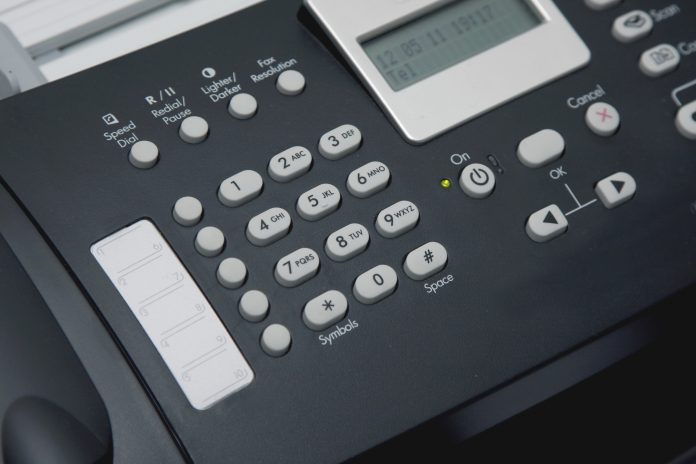Scott Wilson, director of service at eFax, explains why fax machines are still being widely used, the problems it causes and how they can be eradicated from both public and private sector organisations
In the modern-day, when technological advances are as common as the setting of the sun, it is hard to believe that technology invented in the 1840s and made popular in the 1970s, is still used in 2020. Put in those words, the generation of today would be in disbelief as to not just how it is possible for that to be the case, but also as to why this technology is still a preferred method of choice. Yet the fax is still commonly used today, and although yes, among the average member of public it may be a thing of the past, among many business sectors, both public and private, the fax will remain part of the furniture for the foreseeable future.
NHS ban on fax machines
In 2018 Secretary of State for Health and Social Care Matt Hancock announced that, from April 2020, there would be a ban on the use of fax machines within the NHS. At the time, Hancock slammed fax machines, calling the technology ‘archaic’ and claimed, ‘everyone else got rid of them years ago.’ While many will agree that fax machines seem a communication method of a bygone era and accept the choice to no longer use them, the reality is that the fax machine is still prevalent across the public sector even after the date of the ban.
A recent freedom of information request shows that, at a very minimum, 950 fax machines are in use across public sector organisations. Furthermore, 15% hold no records of the number of fax machines in their organisations, meaning the true figure is likely to be much higher.
Fax machine security
The fax machine poses many issues to users in terms of security, price, and efficiency. The fax machine was developed well before the collection of personal data was recognised by firms as such an important commodity. It was not designed to handle such sensitive information. Fax machines risk the user accidentally sending documents to the wrong machine. Office workers can relate to the fact that when walking past a fax machine, documents are often left unattended by workers who are busy juggling tasks or have completely forgotten that they have left them there. The UK’s Information Commissioner’s Office announced that nine out of ten data breaches that occurred last year were a result of human error. With the introduction of GDPR and the huge fines threatening organisations for the mishandling of personal data, security has never been so important.
Since fax as a technology was invented in the 1840s, the original method of listening to music has been invented and then transformed multiple times over. From the phonograph, vinyl discs, cassette tapes, to digital files on handheld devices, the way we listen to music has changed drastically since its original invention. Information held by the most curious of minds studied in uncommon dusty books can now be read by anyone, anywhere, via the internet, or listened to via audiobooks. Technological advancements of everyday interactions with the world are understood to be a necessity and something that we are all used to. So why then are many of us still using fax technology today. The answer is that this method holds many benefits that are vital to its users and are unrivalled by other more common forms of communication.
Fax is a specific type of technology that is required by many sectors. The highly visual nature makes it easy to dissect information and the nature of sending files improves the legal authenticity of the content, which is why industries such as healthcare, finance, legal, as well as the public sector, still use fax as their preferred method of exchanging important documents. As fax is such an important method of communication and the management of important documents, businesses should use fax without the associated disadvantages of the hardware. Modern technology has been developed to provide these organisations with the functionality of fax, with added improvements based on the new requirements and issues of today. Online faxing enables complete fax functionality, whilst removing the need for physical systems and the common issues attached to them. Digital faxing is much quicker and cheaper, saving costs of line rental, maintenance and toner costs. Fax files are sent directly to the email inbox and data encryption is used to increase confidentiality and security. Mobile phones have now been turned into a personal moving fax machine, allowing fax to be sent, received and accessed anywhere. This is made easier by the document management facilities that provide a history of your fax files, allowing for easy referral and control without the need to travel with paper fax.
Fax has stood the test of time and is still to this day such an important communication tool for many. Yet it is time to follow the path of many other beloved technologies of today – leave outdated hardware in the past and embrace the new digital solution.











